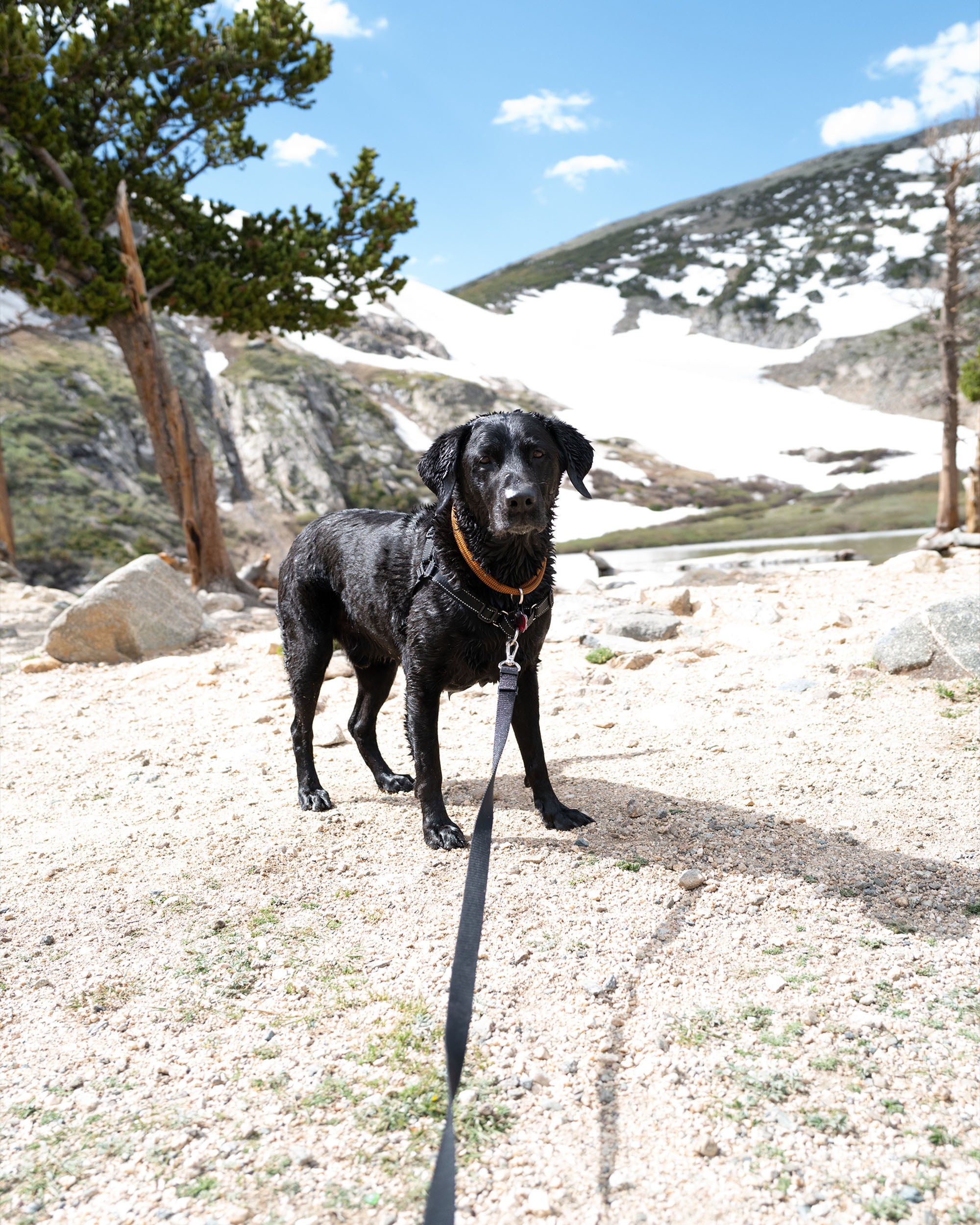There is nothing that brings me more joy than hitting the trails on a beautiful day and enjoying time outside with my dogs. Seeing them enjoy all the fresh smells and stretch their legs while I enjoy the views and peacefulness of nature is so relaxing. However, to get to this point it is important to put in the time and train your dog to be a good trail companion. It is also vital that we follow the rules of the trail and practice proper trail etiquette in order to ensure that we get to continue enjoying these spaces with our dogs.
Choose an appropriate trail
The first step in trail etiquette is choosing a trail that is dog-friendly and dog-safe. Dog-friendly means dogs are allowed on the trail. My favorite tool for finding and planning hikes is the AllTrails app. There is a feature on this app that allows you to filter for dog-friendly trails. If you are hiking in a state park, regional park, national park or wilderness area this information will also be available online through the organization's website.
Dog-safe means the terrain is suitable for your dog specifically. This information may not be as readily available; however, I am generally able to locate it by looking at trail photos and reading recent reviews on AllTrail. For example, is the terrain very rocky which may be harsh on your dog’s paws? Or, is it a very narrow trail with steep drop offs on either side and your dog doesn’t like being in close proximity to other dogs or people? Or, is the trail entirely exposed to the sun and you are planning to hike it midday during the summer? All of these factors involve knowing your personal dog; their strengths, weaknesses and their limits.
Follow the rules of the trail
In addition to finding a trail that is dog-friendly, it is important to familiarize yourself with the rules of the region or trail. These rules are in place for safety and to make the trail accessible to everyone. It is important to respect these rules when they are outlined. Here are some examples of rules that you should look for when researching a trail:
- Are dogs required to be on leash? If so, is there a specified length of leash that is allowed?
- Is the trail an off-leash trail with voice and sight control? Voice and sight control means your dog is always within your sight and under complete voice control. This means you can recall your dog away from ANY distraction including: wildlife, other hikers, dogs, interesting scents, bikes, horses and so much more. If your dog is not under this level of control they should not be off leash on these trails.
- Are there rules about dogs remaining on the trail to protect the trail themselves, certain fragile terrains and plant life?
- Are there regulations surrounding the protection of water sources? This may mean dogs cannot be within a certain distance of creeks, rivers or lakes.

Atlas utilizing his Lifetime Lite Leash and Lifetime Harness at his favorite spot, Saint Mary's Glacier. The Lite Leash is the most versatile leash we offer that can be configured for any adventure.
Respect other trail users
Respecting other trail users is probably the most important factor when hiking with your dog and this is where training comes into the picture. Here are some general guidelines to follow when hiking with your dog:
- Do not let your dog approach or greet other people or dogs without permission.
- Be in control of your dog at all times. This means your dog should calmly pass other trail users including people, dogs, horses, bikes and wildlife.
- The uphill trail user has the right of way. If you are hiking downhill you should yield to let them pass you, this may involve stepping off the trail if it is narrow. Be aware of where you are stepping in geographically fragile or protected areas.
- Do not let your dog chase or interact with wildlife.
Leave No Trace
The cardinal rule of recreating responsibly is to pack out what you pack in. This includes packing out any waste that you create while hiking, including your dog’s poop. You should bag the poop immediately, carry it with you for the remainder of your hike and dispose of it at the trailhead or at home. I highly recommend a smell-proof bag to make packing it out less stinky! Do not bag your poop and leave it on the trail, even if you plan to collect it on the way out. This presents dangers to wildlife and is disrespectful to other trail users. If you are backpacking in a wilderness area there may be different rules including the option to bury pet waste; make sure to research the specific area before you embark on your adventure. The general rule is to bury pet waste in a 6 to 8 inch hole that is over 200 feet away from trails, camps and water sources. In addition, dogs should not urinate in or near water sources.
Happy hiking. Now that you know how to hike responsibly with your dog, get out there and enjoy this beautiful world!!





























